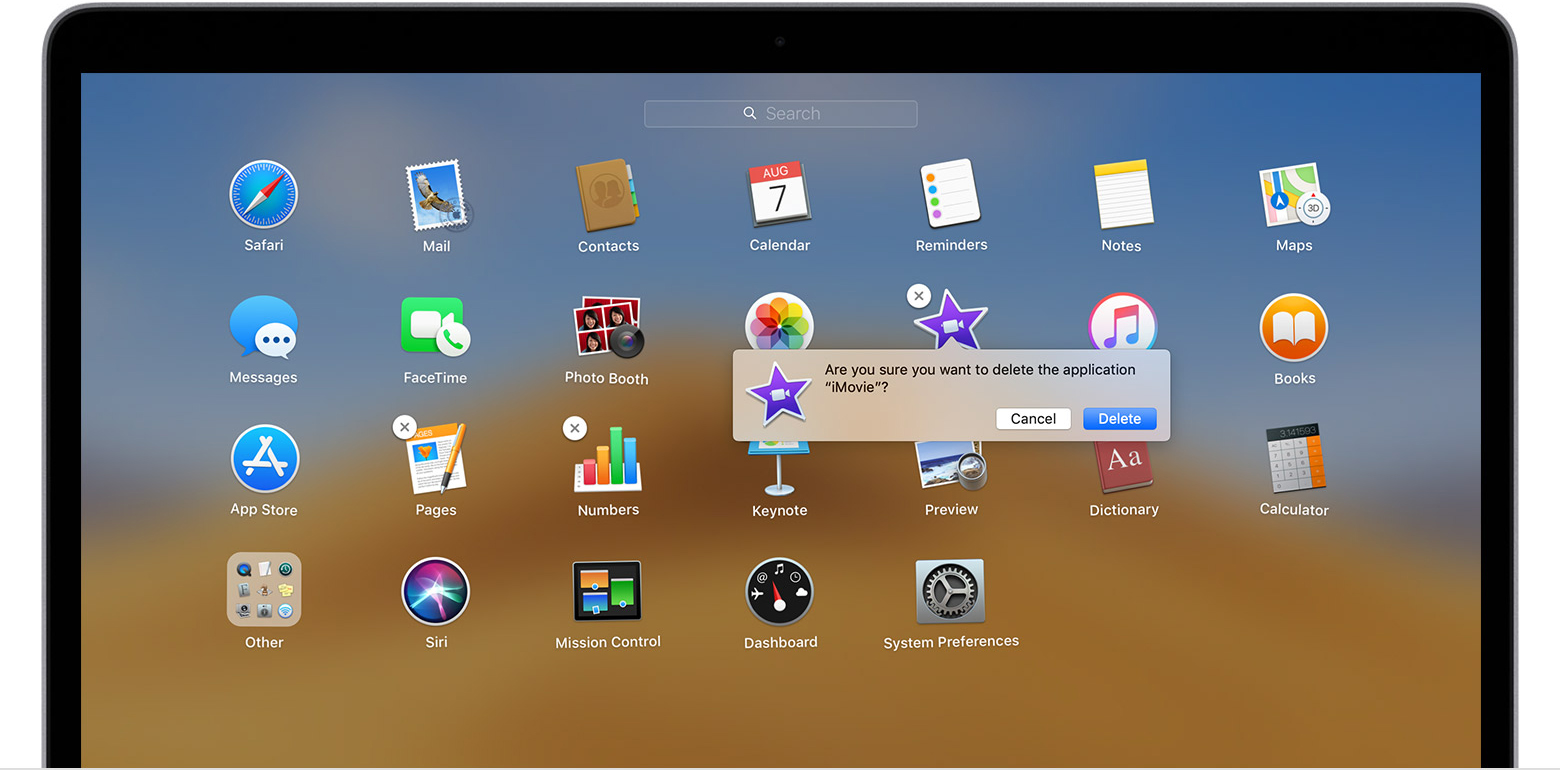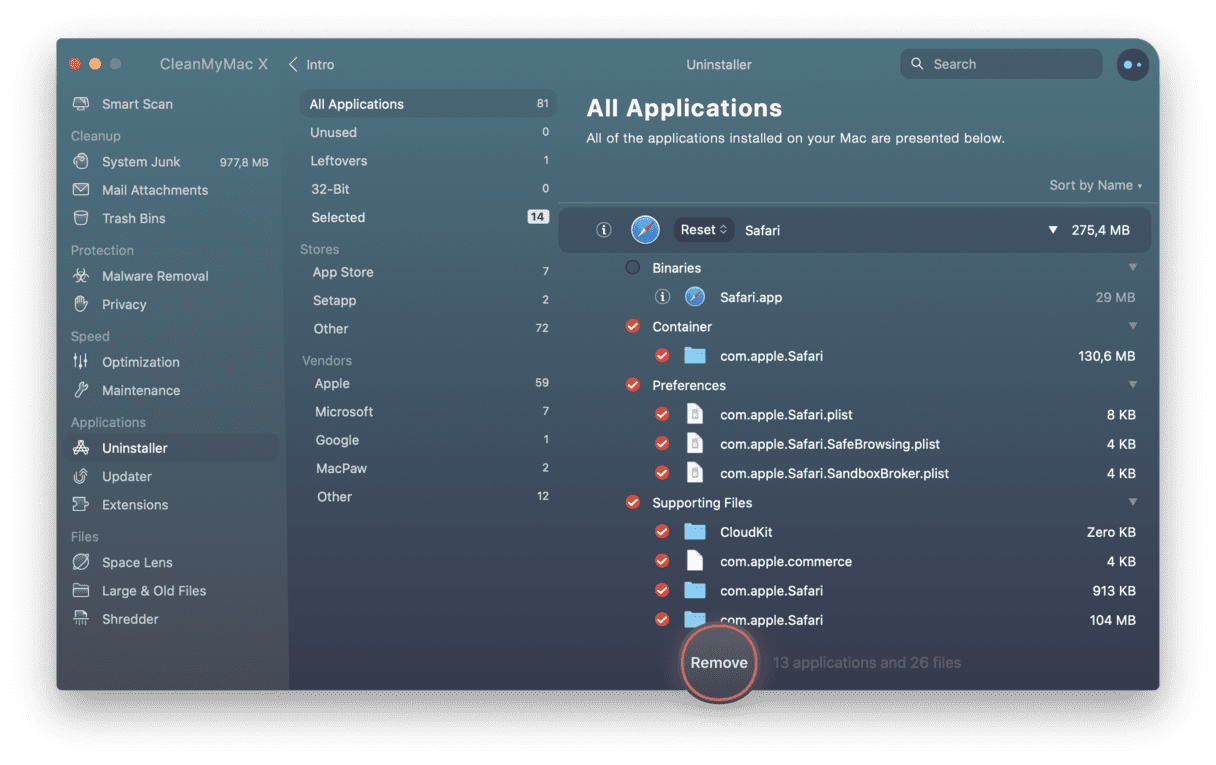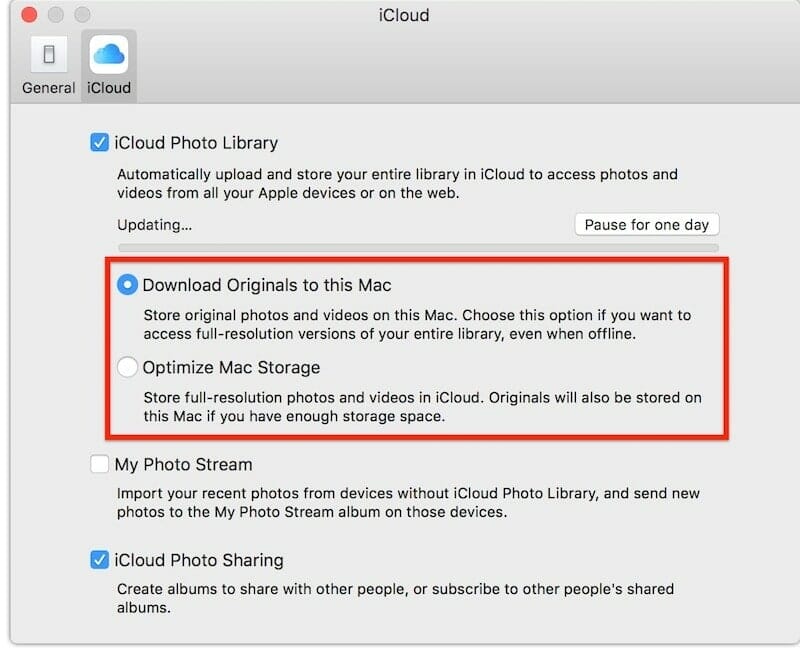Apps You Shoudnt Delete Off Mac
- Apps You Shouldn't Delete Off Mac Os
- Ipad Won't Delete Apps
- Apps You Shouldn't Delete Off Mac Notifications
- Delete App In Mac
Unlike PC's Mac's does not have installer / uninstaller. You just need to delete the application from the applications list in your FINDER window. That removes the application completely. Steps to remove the application. Click on the Smiley icon in the dock (The one which says finder when you point the mouse on it) 2. Click the X on the app icon, which you want to delete and then choose Delete option when you see the pop-up window asking whether to uninstall app on Mac or not. Part 2: How to Delete Apps on Mac with Finder. You can also solve the problem of how to delete apps on Mac with Finder. It also is a very easy way you can simply get in what follows. Step 3: Click on the tab that has SmartDelete and turns the switch to on. Now, you’ll see a popup every time you need to delete an application. Back to menu ↑ Using the CleanMyMac. CleanMyMac will scan your system as a whole, and also identifies the old apps to help keep the Mac up to date. CleanMyMac offers its own Uninstaller feature where you can easily remove the app by selecting the. When you normally delete your files in Mac OS X, the operating system is only forgetting where those particular files are placed, while the data still physically remains on the drive. Beginning with Mac OS 10.3, Apple enhanced its security by introducing the Secure Empty Trash feature, which follows the U.S. DoD pattern of overwriting data. It includes files like the Mail.app and Chess.app apps included with Mac OS X, so you can’t remove these — even from the command line as the root user. This also means that malware can’t modify and infect those applications, however.
Welcome to the 353rd edition of Android Apps Weekly. Here are the headlines from the last week:- Netflix is increasing its prices for its most popular plans. The regular HD streaming plans increased from $12.99 per month to $13.99 per month while the 4K streaming plan went from $15.99 per month to $17.99 per month. Netflix says its to ensure people get more TV shows and movies. The price increase hurts a bit, but luckily it’s nothing too insane. The last time Netflix increased prices was January of 2019 so it’s actually been a little while.
- Spotify is also increasing its prices sooner rather than later. The CEO confirmed as much earlier this week. We don’t know how much the price increase is or when it’s happening. However, it is an inevitability at this point. The family plan already saw a price hike not long ago in select markets so this shouldn’t come as much of a surprise to anyone. Hit the link for more details.
- Google Messages received a new feature this week. People can schedule text messages for any day or time that they want. This is a bit of a niche feature, but it can help with how some people text. The feature rolled out to some people already with a bigger rollout likely planned for later. Additionally, this feature works with both RCS and regular SMS text messages.
- WhatsApp had a few announcements this last week. The first is a set of new storage tools. The first lets you remove files larger than 5MB and files you forwarded a bunch of times to save on storage. Additionally, the service is rolling out Disappearing Messages (expiring messages) this week to users worldwide. Hit the various links to learn more.
- Activision Blizzard announced a slew of mobile games this last week. It wasn’t any game in particular, but the gaming giant said it would make mobile games for basically all of its existing gaming properties. We already know Diablo Immortal is coming someday. However, the developer also has properties like Spyro, Overwatch, StarCraft, and others without a mobile property yet. Hopefully they do it well and don’t screw it up.
Mechanical Instinct
Price: Free to play
Mechanical Instinct is a mobile fighting game. Players choose from six pilots and start customizing their fighting style with different melee and ranged weapons. You level up over time to take on tougher opponents. The game also includes a leaderboard, an alliance system, and a loot box system. The free to play elements aren’t too bad but eventually you may feel a lot of pressure to buy stuff with real money. In any case, the controls are simple and the game is fun in an arcade game sort of way.
Starlink

Price: Free
Starlink is a management app for SpaceX’s upcoming satellite-based Internet service. The app does a variety of things, including helping you set up your Starlink setup, run speed tests, and troubleshoot connection issues. We couldn’t test this app fully because we don’t have Starlink, but the app gives you a good idea of how it’ll run for people. In particular, the setup process looks pretty easy and neat. Most people won’t be able to use this, but it’s nice to see it since it signals that the service might actually launch eventually.
Tera: Endless War
Price: Free to play
Tera: Endless Wars is a new strategy game with kingdom building elements. You basically build up your troops and take on opposing armies. It uses a hexagon style grid map where you build your defenses and conduct your battles. The controls are pretty easy and the graphics are reasonably decent. We have seen some complaints about performance on lower end devices, though, so that’s something to keep in mind. You spend most of your time watching battles rather than conducting them and that’s a bit of a drag, but the game is a decent time killer for fans of the genre.
Zenchat
Price: Free
Zenchat is a chat app mixed with a to-do list app. It basically merges the two into a single idea. Any message can become a task with a due date, reminders, notes, and whatever else you need. There are separate sections for managing your chats and task as well as decent chat functions. This one is mostly for business use and advertises a decent way to stop switching between management services and chat services. It’s still young and has a long way to go, but the idea is quite good and we hope they do it right.
Shadow Fight Arena
Price: Free to play
Shadow Fight Arena is the latest game in the popular Shadow Fight series. It’s a 2D side scrolling fighter where you create teams of fighters and face off against foes. The game includes an online PvP element along with some single player activities. The various heroes have upgradeable abilities and there are plenty to collect. We also quite like the controls. You get a lot more control over your characters than some arcade mobile fighters. This one is pretty decent and early reviews also praise the game despite its early bugs.
Thank you for reading! Check these out too:
If we missed any big Android app or game news or releases, tell us about it in the comments.
There often comes a time when you just don’t need to keep an app around. It may be old and unsupported – or maybe you just don’t use it anymore and don’t have a need to keep it around. If that sounds like you, we’ll show you exactly how to uninstall apps on Mac.
Uninstall Mac Applications
Get the best uninstallers to delete any application on your Mac.
With macOS Catalina and later, there are plenty of great reasons to delete apps. If an app is 32-bit, it has to go. Apple made the decision to discontinue support for 32-bit binaries with macOS Catalina, and many app developers didn’t retrofit their apps to be 64-bit as Apple requested. Old 32-bit apps no longer work on macOS.
Some apps may just be unnecessary. If you have apps for managing photos or your music library, you may find the new Photos app that comes with macOS or the new Music app do a great job, so the old software you’d been using is redundant. It’s gotta go!
Whatever the case, there are quick and easy ways to delete apps from your Mac. We’ll walk you through it!
One thing to know is deleting an app isn’t the same as uninstalling it. There are two ways to delete apps, though: Finder, and Launchpad.
How to delete apps on Mac using Launchpad
In Launchpad, you can pressing and holding the app's icon to bring up the wiggly app management feature. Like iOS, app icons start to shake in-place, which allows you to move them around. Third-party apps also have a small ‘x’ icon on the top right of the icon in this mode, which allows you to delete them.
Another way to delete apps is from Finder. There, you simply select the app, then right-click and select ‘delete.’ In either Finder or Launchpad, you can drag app icons to the trash bin to delete the apps.
(If you’re on an older version of macOS – or OS X, for the much older versions – and managing apps via iTunes, the process is similar. Select the app, right-click, and select ‘Move to Trash.’)
Apps You Shouldn't Delete Off Mac Os
Remove apps with the Finder
Remember when we told you deleting and uninstalling weren’t the same? Deleting is the first step in the process; Apple wants you to do more work!
The completely uninstall an app, follow the instructions for deleting an app above. Then head to your library folder from Finder:
- Open Finder
- Select ‘Go’ from menu
- Hold down ‘option’ key on keyboard; you should see a new option for ‘Library’
- While holding down the option key, select ‘Library’
A word of caution before you proceed: DO NOT delete files if you’re not sure what they do. Apple hides the Library for a reason: most people shouldn’t go poking through it and deleting files haphazardly. If you don’t know what a file or folder is for, leave it alone.
Library houses files and folders apps need to operate. Sometimes these files or folders are for updating an app, or managing a Safari extension. Again, Library isn’t a toy. Tread lightly!
When you find a file or folder you know doesn’t belong – and is associated with the app you deleted – you can also delete the file by right-clicking and selecting ‘Move to Trash,’ or dragging it to the trash bin.
Deleting these files completes the deletion of an app. It’s possible those files were doing things necessary for the app that you no longer want, like calling a server or tracking keystrokes. Without the app, those types of features are just spyware.
When you’re done deleting apps and associated files, go ahead and empty your trash bin.
If you’re thinking ‘wow, that all seems sort of scary,’ you’re not wrong. Even seasoned pros get nervous when digging into a computer’s Library file system. There is a better way to uninstall programs from Mac, though!
Uninstall Mac apps and delete left behind files

If the idea of deleting apps and digging into secret libraries on your Mac to remove associated files is daunting, we have a better solution.
CleanMyMacX is a best Mac utility that helps manage your apps and files, in addition to a ton of other features. For now, we’ll focus on app management.
In the CleanMyMacX menu is an ‘Applications’ section on the left pane. It has three options: Uninstaller, Updater, and Extensions. Updater lets you manage updates for apps you want to keep, and saves you the trouble of digging through the App Store just to update an app.
Extensions helps you manage Safari browser extensions, Spotlight plugins, Internet Plugins, and Preference Panes. It’s the simplest and most straightforward way to manage the add-ons some apps demand, which aren’t always caught when deleting or uninstalling an app. When you find an extension you don’t want, just select it and click the ‘Remove’ button at the bottom of the window.
To uninstall apps on Mac, go to the ‘Uninstaller’ option with CleanMyMacX. Here you’ll see apps in a variety of categories. There’s the ‘all’ category for – you guessed it – all of the apps on your Mac. There’s also a section named ‘unused,’ which shows you which apps you’re not really using often.
The ‘Leftovers’ section makes Apple’s ‘Library’ look silly. In CleanMyMacX, Leftovers automatically finds the files associates with apps you no longer have. Hovering over the file in a list brings up the ‘Show’ option, which gives you precise info on exactly what app the file is associated with. No more fumbling through Library and guessing!
There’s also a section for 32-bit apps (remember, we talked about that!) which shows every app that’s no longer supported for macOS. If you really enjoy the app, we suggest reaching out to the developer to see if they will be making it a 64-bit app. If not, go ahead and delete it; it just won’t work on your Mac.
When you’re ready to uninstall programs from your Mac, select the app in any menu you see it in and click ‘Uninstall’ at the bottom of the screen. It’s that easy!

Conclusion
The main goal when uninstalling an app from macOS is to get rid of it completely: files, folders, the app – everything. We’ll also note that if you plan on never using the app or service again, it’s best to request the app developer remove your profile entirely. The method for this varies, but the app or service’s website should have the answer you need.
It takes a long time to delete an app the Apple way, and it’s just not worth it. Digging through the Library is scary stuff, and one wrong move can have a ripple effect on your entire system. No thanks!
Ipad Won't Delete Apps
We prefer CleanMyMacX, which takes care of the heavy lifting of deleting an app, then removing associated files to completely uninstall it. With a few clicks, you completely rid yourself of an app you don’t want.
For mobile users, there’s also AnyTrans, available for iOS and Android. AnyTrans is a macOS app that lets you manage backups, apps on your device, and account or cloud content in a much cleaner interface than Apple or Google provide. It’s easy to use, and available for both Android and iOS.
Best of all, AnyTrans as well as CleanMyMacX are available free as part of a seven day trial of Setapp. In addition to these apps, you get access to dozens of other handy macOS apps!
Meantime, prepare for all the awesome things you can do with Setapp.
Read onSign Up